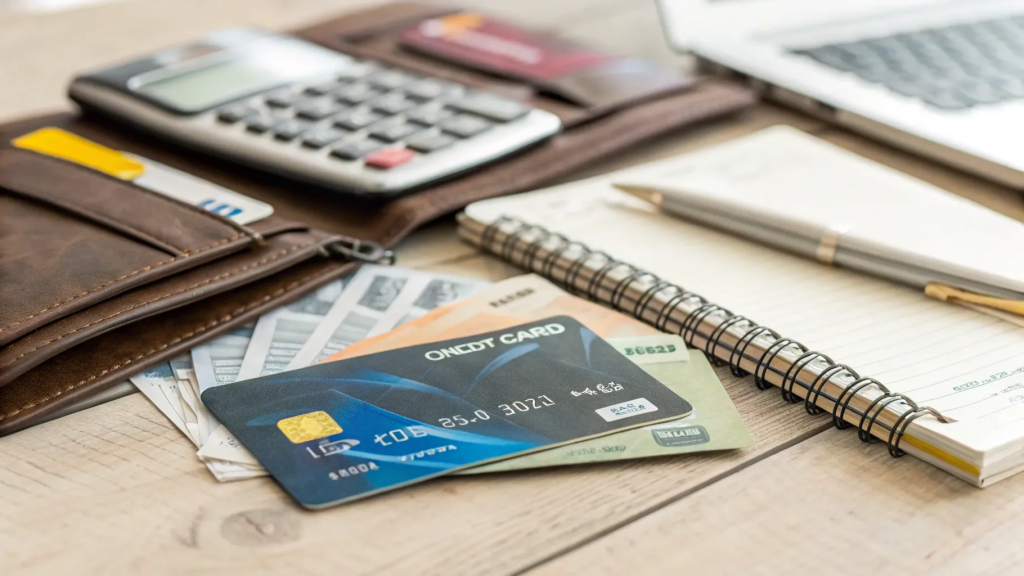In today’s world, understanding credit products is crucial for managing your finances effectively. Whether you’re considering credit cards, lines of credit, or personal loans, each has its own pros and cons. Let’s dive into the differences and determine which option might be the best fit for your needs.
Introduction to Credit Products
Understanding credit products is essential for anyone looking to manage their finances wisely. In Nigeria, where financial literacy is still growing, grasping the basics of credit cards, lines of credit, and personal loans can empower you to make informed decisions. Each of these credit products serves a unique purpose and comes with its own set of advantages and drawbacks.
Let’s break down these options to help you choose the best fit for your financial needs.
Credit Products: What Are Credit Cards?
Credit cards are a popular form of credit product. They allow you to make purchases now and pay for them later. When you use a credit card, you are borrowing money from a bank or financial institution, with the agreement to pay it back at a later date.
In Nigeria, you can use credit cards for various transactions, from shopping to paying bills. The convenience of carrying a card instead of cash is one reason many people opt for credit cards.
How Credit Cards Work
When you use a credit card, the merchant gets paid immediately by the card issuer, while you repay the issuer later. This three-way relationship involves you, the merchant, and the bank. The bank assesses your creditworthiness before approving your application and setting a credit limit.
Your credit limit is the maximum amount you can charge to your card. It varies based on your credit history and income level.
Pros of Credit Cards
- No Annual Fees: Many credit cards do not charge annual fees, making them more accessible.
- Rewards Programs: Some cards offer rewards or cashback on purchases, allowing you to earn while you spend.
- Grace Period: You often have a grace period to pay off your balance without incurring interest.
- Build Credit History: Using credit cards responsibly can help improve your credit score.
Cons of Credit Cards
- High-Interest Rates: If you carry a balance, the interest rates can be steep, often exceeding 20%.
- Potential for Debt: The ease of using credit cards can lead to overspending and accumulating debt.
- No Cash Access: Credit cards are not ideal for withdrawing cash; cash advances usually come with high fees.
Credit Products: Understanding Lines of Credit
A line of credit is another type of credit product that offers more flexibility than a credit card. It allows you to borrow money up to a set limit, which you can access whenever you need it. This can be particularly useful for larger expenses or emergencies.
In Nigeria, lines of credit can be secured or unsecured, depending on whether you provide collateral, like a property or vehicle.
How Lines of Credit Work
With a line of credit, you can withdraw funds as needed, and you only pay interest on the amount you use. The lender evaluates your financial situation and sets a limit based on your creditworthiness. Once approved, the funds are available for you to use at any time.
Unlike credit cards, lines of credit typically do not have a grace period, meaning interest starts accruing as soon as you withdraw funds.
Pros of Lines of Credit
- Flexibility: You can borrow only what you need, which helps avoid unnecessary debt.
- Higher Limits: Lines of credit often come with higher borrowing limits than credit cards.
- Lower Interest Rates: Generally, lines of credit have lower interest rates compared to credit cards.
- Unsecured Options: Many lines of credit do not require collateral, making them more accessible.
Credit Products: Cons of Lines of Credit
While lines of credit offer flexibility, they come with their own set of drawbacks. Understanding these cons can help you make an informed decision before taking one out.
- Approval Process: Getting approved for a line of credit can be more challenging than for a credit card. Lenders often scrutinize your financial history more closely.
- No Grace Period: Unlike credit cards, interest begins accruing immediately once you withdraw funds. This can lead to higher costs if you’re not careful.
- No Rewards: Lines of credit typically do not offer rewards or cashback, unlike many credit cards that incentivize spending.
- Potential Fees: Some lines of credit may include fees if you don’t use them or if you exceed your limit, adding to your overall costs.
Credit Products: Exploring Personal Loans
Personal loans are a straightforward option when you need a lump sum of money. They differ significantly from credit cards and lines of credit, so let’s explore what they are and how they function.
How Personal Loans Work
When you take out a personal loan, you receive a specific amount of money upfront. You then repay this amount in fixed monthly installments over a set period, usually ranging from one to five years.
Interest is included in your monthly payments, so you know exactly how much you owe each month and when the loan will be fully paid off. This predictability can be a significant advantage.
Pros of Personal Loans
- Clarity of Costs: With fixed monthly payments, you know exactly how much to budget each month.
- Flexibility in Use: You can use personal loans for various purposes, from home renovations to debt consolidation.
- Higher Limits: Personal loans often allow for larger amounts compared to credit cards or lines of credit.
- Lower Interest Rates: Generally, personal loans carry lower interest rates than credit cards, making them more affordable in the long run.
Cons of Personal Loans
Despite the benefits, personal loans have some downsides that you should consider.
- No Payment Flexibility: You cannot adjust your monthly payment amount; you must stick to the agreed-upon schedule.
- Interest Included: Interest is part of your monthly payment, meaning you can’t avoid it by paying less in a given month.
- Application Process: The application process may be more involved than for credit cards, requiring documentation and a credit check.
- Upfront Fees: Some personal loans might have origination fees that can increase your overall cost.
Comparing the Three Credit Products
Now that we’ve explored credit cards, lines of credit, and personal loans, let’s compare these three credit products to see which might be the best fit for your financial situation.
| Feature | Credit Cards | Lines of Credit | Personal Loans |
|---|---|---|---|
| Borrowing Limit | Varies widely | Typically higher | Higher than credit cards |
| Interest Rates | High | Generally lower | Lower |
| Payment Structure | Flexible minimum payments | Flexible withdrawals | Fixed monthly payments |
| Rewards | Often available | No rewards | No rewards |
| Approval Process | Usually easier | More rigorous | More documentation required |
Final Thoughts on Credit Products
Choosing the right credit product depends on your financial needs and habits. Credit cards offer convenience and rewards but can lead to debt if mismanaged. Lines of credit provide flexibility but require careful monitoring of withdrawals. Personal loans offer clarity with fixed payments but lack flexibility.
It’s essential to assess your financial situation and goals before making a decision. Whether you opt for credit cards, lines of credit, or personal loans, understanding the pros and cons will help you navigate your financial journey more effectively.
If you want to explore more about managing your finances, consider checking out our blog on best budgeting apps of 2025 or learn about top loan apps in Nigeria to make borrowing easier.
I have 13 years of experience in customer service at one of Brazil’s largest banks, including 5 years as a general branch manager. I am a specialist in banking products and services with a proven track record in team leadership and business development. I am also a holder of Brazilian certifications CPA-10 and CPA-20.



